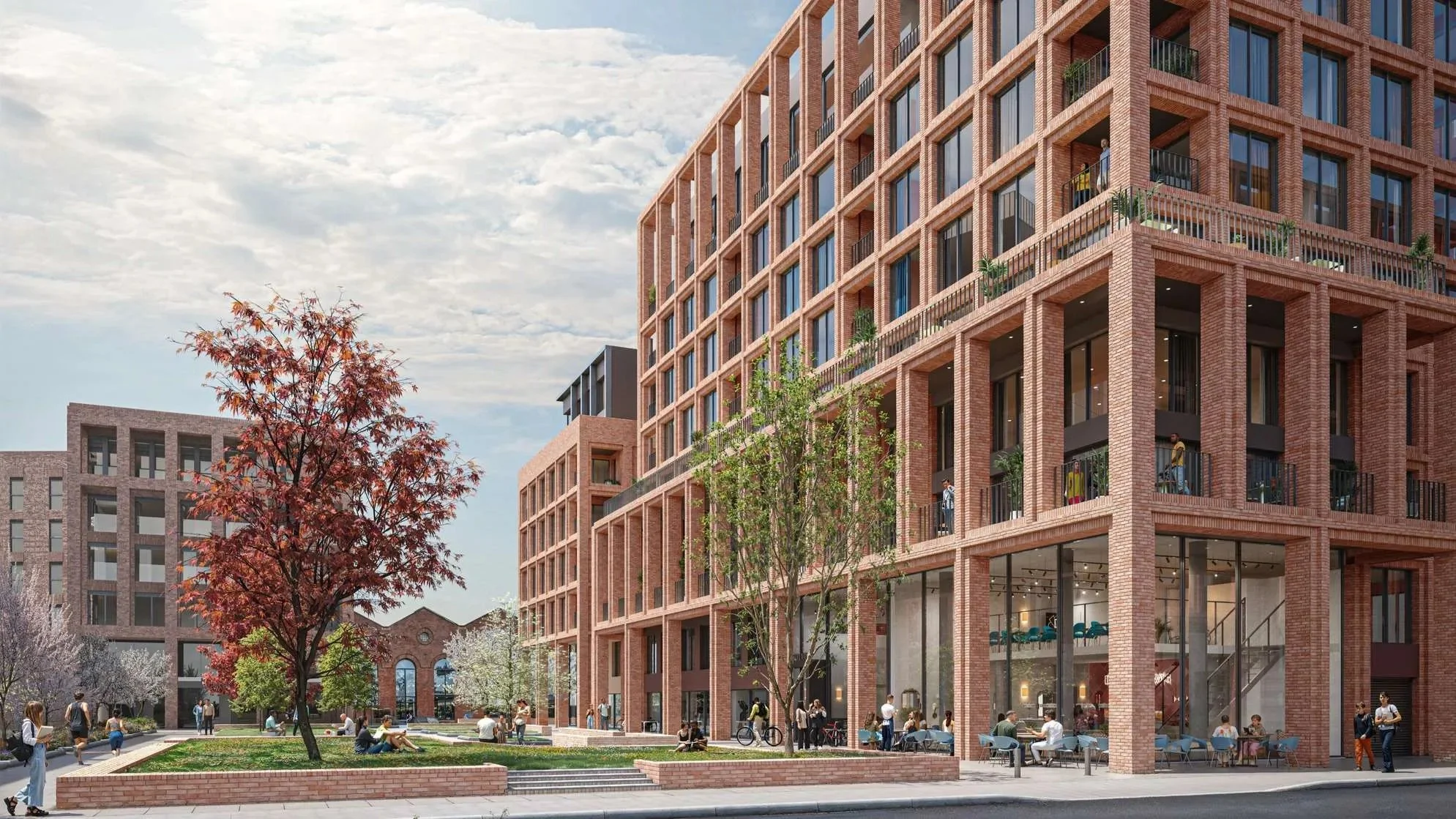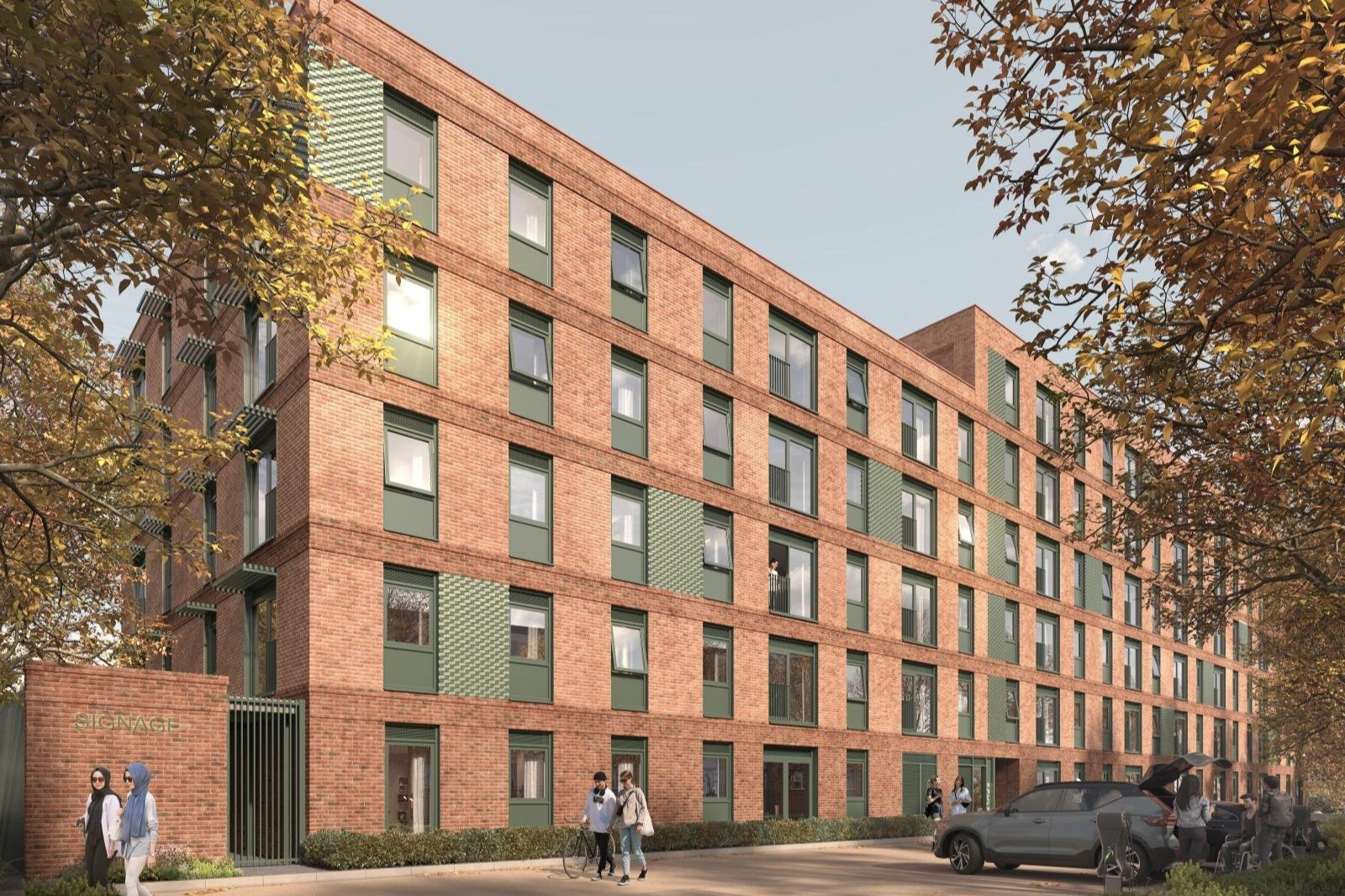Urban regeneration needs engineers at the heart of the conversation
Points Cross, Leeds
Image credit: Guinness Developments
Article posted on: 14 July 2025
With economic conditions more challenging than ever, project viability is crucial. Daniel Singh shares his thoughts on how incorporating technical expertise from the start ensures buildable, impactful, and cost-effective sites.
As engineers, we see urban regeneration as the practical delivery of ambitious placemaking: unlocking constrained, brownfield sites, transforming underused land, and designing the infrastructure that brings masterplans to life.
Recent social changes, such as hybrid work patterns and the decline of traditional high streets, have fundamentally shifted the way we interact with the places where we live and work.
This has created both challenges and opportunities in the approach to regeneration in our towns and cities.
Our role as engineers is to provide expert consultancy that demonstrates how strategic technical interventions, ambitious designs and streamlined planning can breathe new life into places, generate long-term economic impact and wider community benefit.
But in the current economic climate, viability is tighter than ever. The ultimate aim is to make these sites buildable, impactful and cost effective. That's where we come in.
Whether it’s regenerating heavily constrained brownfield land or maximising the reuse of existing buildings and foundations, engineers must be embedded early – ideally at RIBA Stage 1.
When vital technical input is needed on new-build residential and commercial sites, we can advise on a whole range of factors that affect viability. For example, embodied carbon, materials transport, and drainage are all considerations that not only shape sustainable outcomes but mitigate overall delivery risk.
There’s also a key role for engineers to play in interrogating the viability of historic buildings that have been earmarked for redevelopment.
Often these schemes have unique constraints related to design and planning, so we work in conjunction with developers and architects on designs and solutions that meet planning requirements, are cost-effective and don’t compromise on sustainability.
Clancy Consulting: Urban regeneration experts
At Clancy, our expertise in urban development ranges from low-rise Passivhaus schemes in Salford to high-rise developments on multi-million-pound mixed use schemes as part of wider masterplans.
Willohaus, Salford
Image credit: Buttress
Guinness Developments’ £160m Points Cross scheme in Leeds is a landmark project by one of the largest social housing providers in the UK – delivering 928 new homes in the city’s South Bank regeneration area.
We were appointed by Guinness to provide civil and structural engineering and geoenvironmental advice for the delivery of the scheme, which comprises five blocks ranging from six to 20 storeys to be built in three phases.
Points Cross, Leeds
Image credit: DK-Architects & Collective
Phase one, which consists of Block A and B, is currently on site. Both blocks are formed using reinforced columns with 225mm flat slab floor plates, with stability to the structures provided by concrete cores.
Our experts are assisting with these complex reinforced concrete structures, alongside intricate façade detailing, and a 12m transfer beam enabling underpass access. We have also provided support on the Building Safety Act, to help Guinness and its contractors to navigate the challenges of Gateway 2 on these higher-risk buildings.
Part of a wider initiative to create 8,000 homes and 35,000 jobs, Points Cross is a major step forward in reshaping Leeds. It is just one example of ambitious urban regeneration that requires robust civil, structural and geoenvironmental engineering expertise to be commercially viable, sustainable and meet local needs.
As government focus sharpens on urban regeneration, particularly housing delivery on brownfield sites, engineers should continue to lead the charge in collaboration with ambitious developers and visionary architects.
To find out more about our services, contact Daniel Singh.



